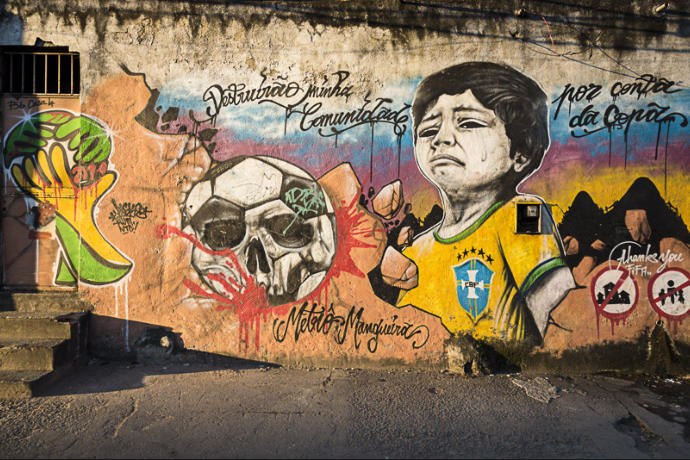








The magazine of the photo-essay

Jan 2017 back issue



by Christopher Pillitz
“A free, really high quality photo-essay magazine. Fabulous!”
Stephen Fry. British actor, writer and film & documentary maker


In Brazil, football is not restricted by physical space and can be found in
stadiums, fields, beaches, the backs of buildings or any old area, where a
couple of teams can run after a ball. Football lies deep in the soul of all
Brazilians.
And it is in the soul that football becomes the most beautiful of all sports. No
one plays better than the soul of a football fan. It is the soul that dribbles the
furthest, saves the hardest penalties, scores the most spectacular goals.
Every Brazilian soul is a football ace.
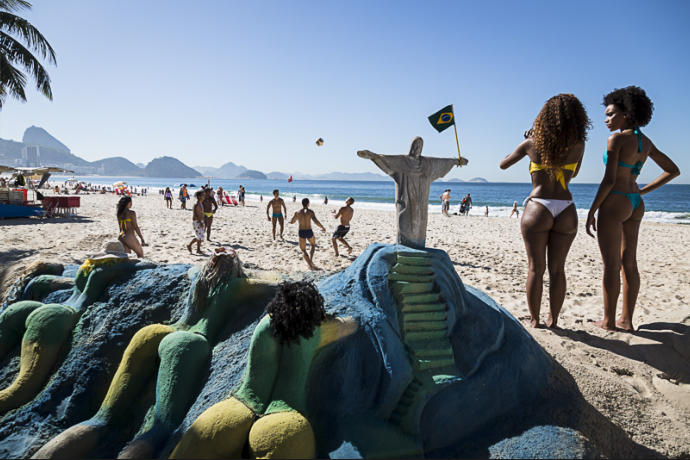
A group of friends play a game of football on Copacabana beach with a sand sculpture of "cariocas" sunbathing whilst
Christ the Redeemer keeps a watchful eye, Rio de Janeiro.
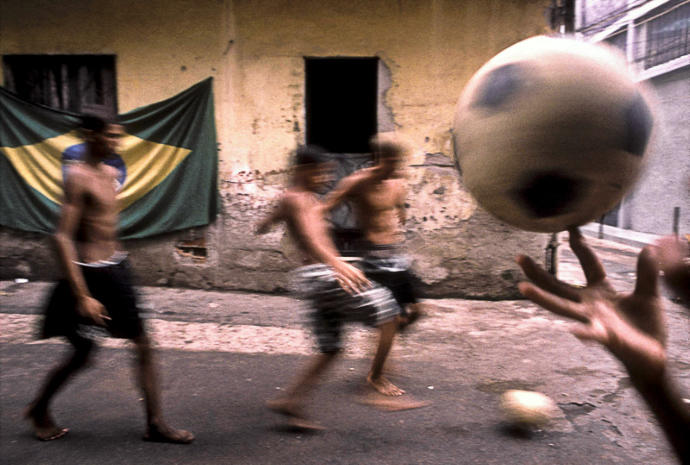
Boys play football in the narrow streets of Jacarezinho Favela, Rio's second largest city (POP: 200.000) and until
recently a no go zone due to the violent drug trade which infested all of Rio's favelas, 1997.
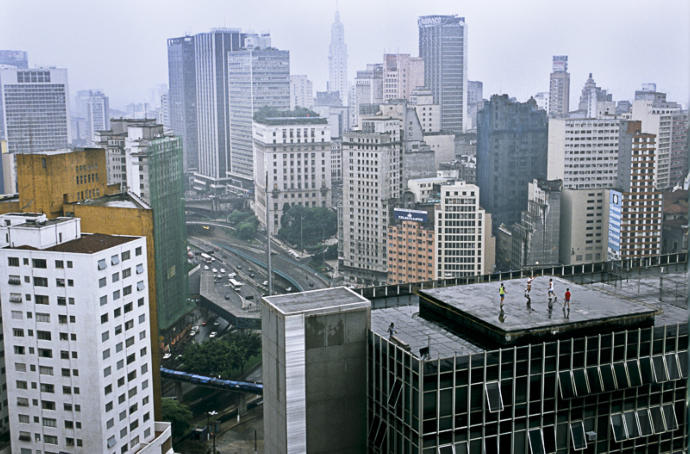
A group of young men defy logic to brighten their day by having a "kick about" on a Sao Paulo skyscraper, 1997.
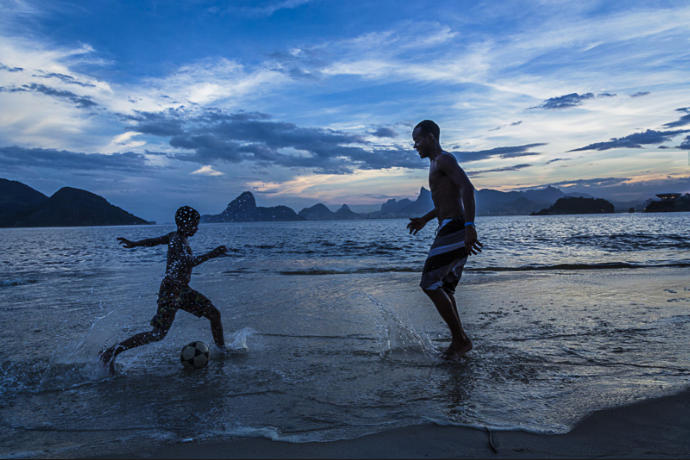
A father and son play football on Niteroi beach at dusk with a view of the Guanabara bay, Christ the Reedemer and the
Sugar Loaf mountain, Rio de Janeiro.
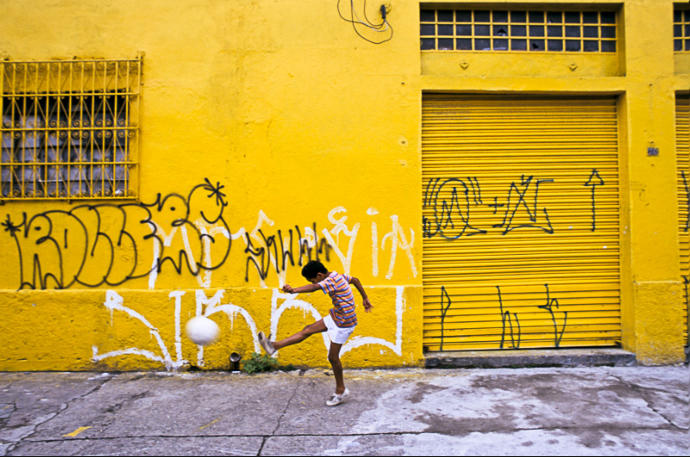
In the absence of green spaces in the megacity that is Sao Paulo, a boy kicks a ball to friends on the streets of Brazil's
industrial heartland. 1997.
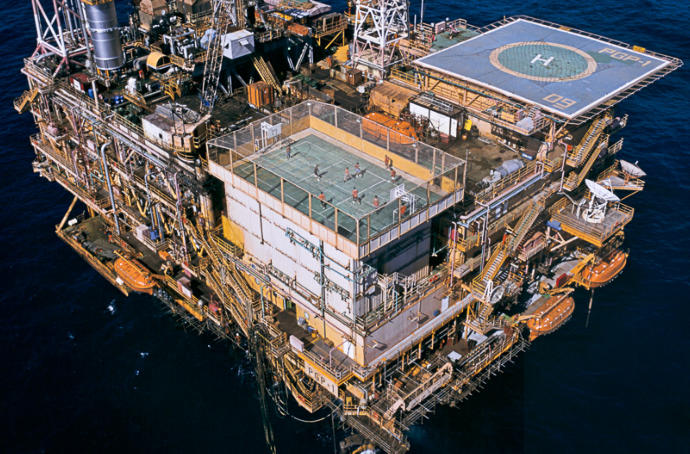
In their time off, oil workers spend what free time they have to play football in a purpose built caged football pitch atop
a Petrobras, Brazilian state owned oil company's platform, Atlantic ocean, 1997.
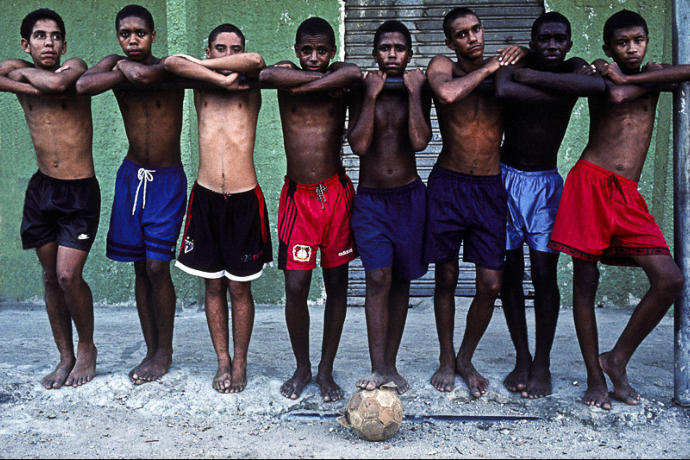
Friends from favela Jacarezinho strike a pose after a game of football on the earth pitch inf their neighbourhood. Until
recently their favela was controlled by the drug cartels which usually meant that the only way to make money was
either by becoming involved with the drug gangs and risking what would be a short life or by trying to make it as a
professional footballer, Rio de Janiero, 1998.
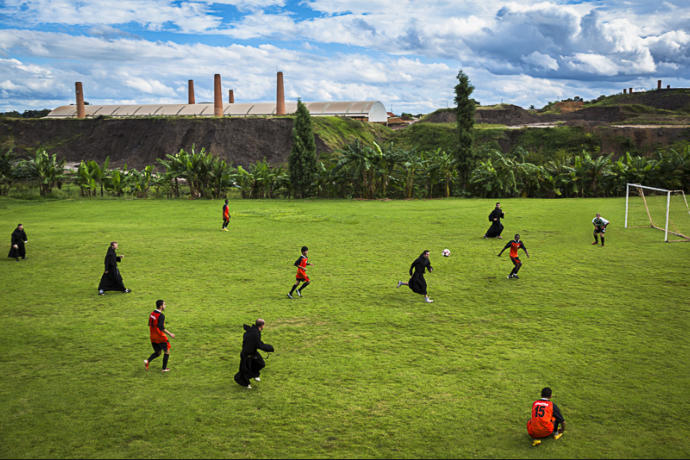
Robed priests of Santo Tomás de Villanova seminary play a game of football against international student trainees. The
seminarian football team have won in recent years many local trophies as they remain amongst the best team in the
region, Ourinhos.
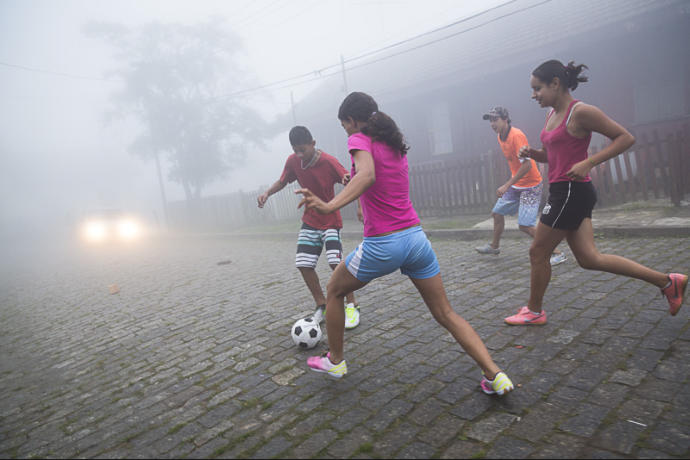
A group of teenage boys and girls play a "pelada" in the fog covered cobbled streets of Paranapiacaba. It is said that in
this small village, British railway workers settled and formed the first football team in Brazil known as "Clube União Lira
Serrano" formed by workers from the Sao Paulo Railway Company and local workers, Sao Paulo State, 2013.
A mural depicts a young boy dressed in the Brazilian football team's national T shirt crying because of the eviction he
and his family will undergo due to the proximity of his home to the Maracana stadium which completes its facelift for
the 2014 FIFA World Cup to be held in Brazil, Rio de Janeiro.
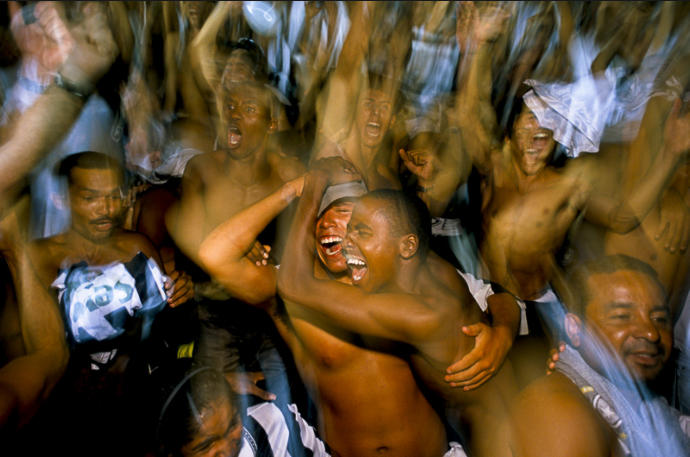
Impassioned fans hug each other during the final of the interstate championships between Botafogo FC and Sao Paulo
FC at the iconic Maracana stadium, 1998.
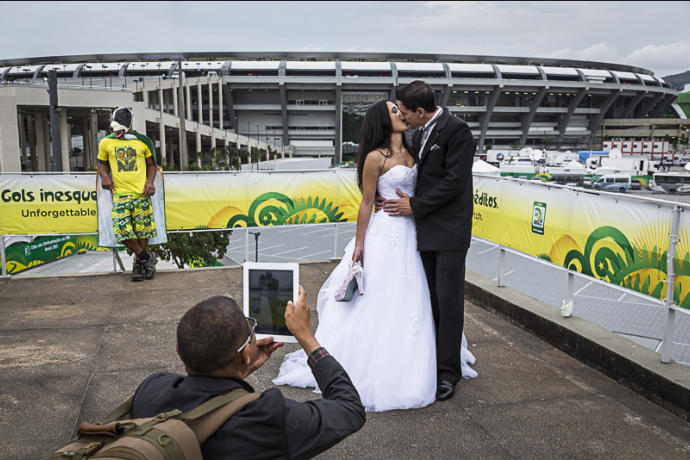
At the final of the Confederations cup between Brazil and Spain (3-0) at the iconic and newly rebuilt Maracana, a just
married couple bless their union by going to the hallowed grounds of the world's most revered stadium for a photo
session, Rio de Janeiro, 2013.
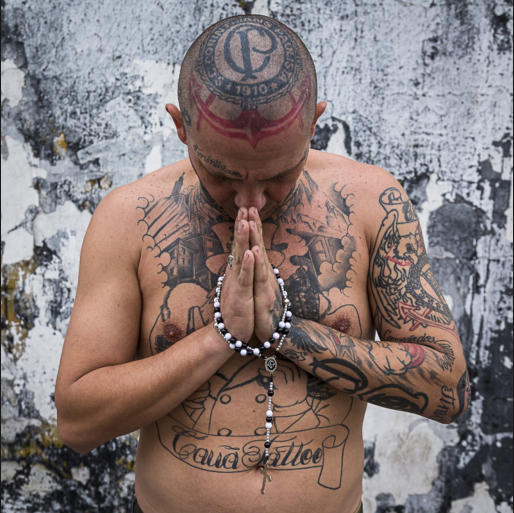
Alexandre Helios Motta, 37 one of the most fanatical and ardent of Corinthians FC
fans. His body is covered in his team's tattoos. For him Corinthians FC is bigger, more
important then anything else in life. His association with the club runs from birth and
he can see the team's HQ from his home in Sao Paulo. He never misses any of their
games including those that take place abroad even going as far as Japan when
Corinthians played against Chelsea in the 2013 World football championship or the
Libertadores cup across South America. He forms part of one of the hard corp groups
of fans known as "Gavioes da Fiel", or Hawks of the Faithful, Sao Paulo.
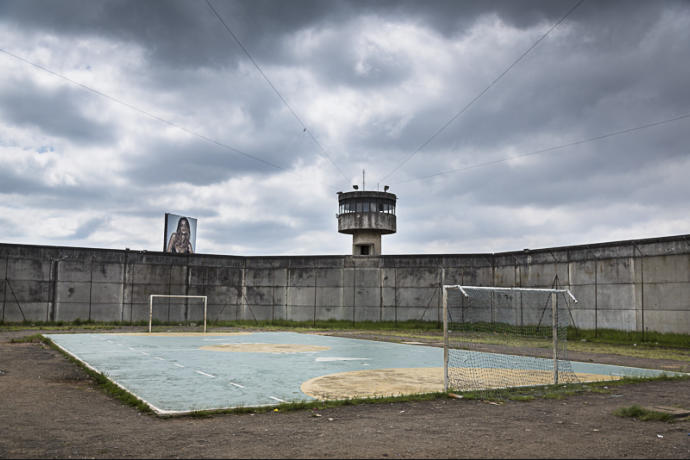
One of four football pitches inside Marrey prison, a stones through from the international airport in Guarulhos is not
only overlooked by the prison guards but also Giselle Bünchen and other models advertising lingerie. The 2400
prisoners spend years inside for crimes of theft, drug trafficking, murder and other violent crime. Football is taken very
seriously. They have their own competition and if any serious misdemeanour is carried out they are deprived of the one
activity they are all passionate about. Guarulhos.
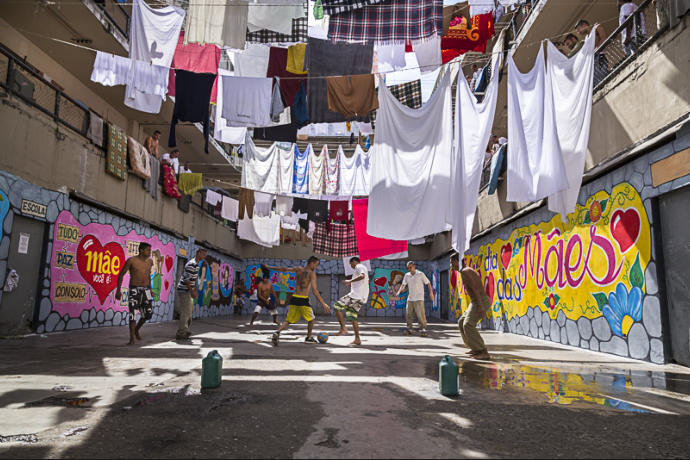
Inside Marrey Prison close to Sao Paulo's international airport at Guarulhos, the high security penitenciary holds 2200
inmates, 1000 more then it can officially hold. The prisoners play a football tournament as part of their privileges for
good discipline. This high security institution houses mostly drug related criminals and other vilent criminals. Guarulhos.
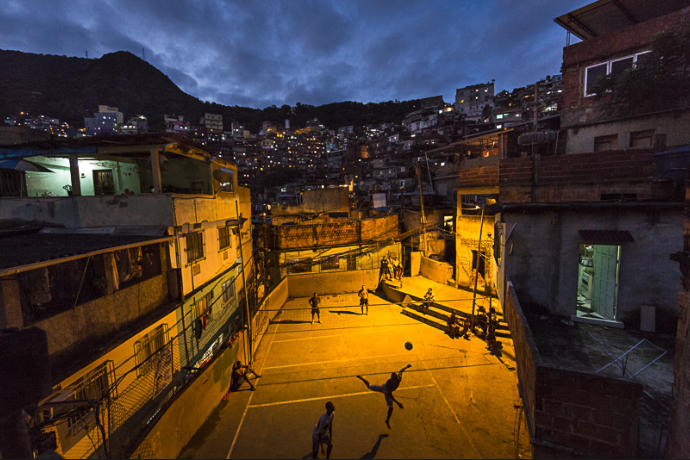
A game of ‘fute-vollei’ (volley-football), a Brazilian speciality being played in favela Rocinha, one of Rio de Janeiro's
most densely populated, Brazil.
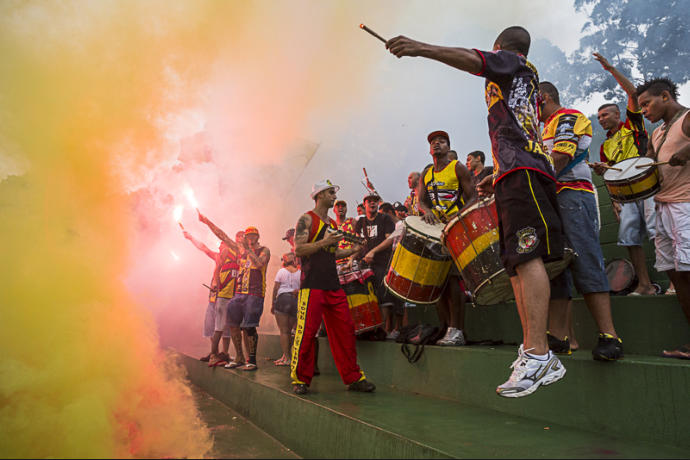
Sao Paulo amateur "Várzea" Championship between Colorado and Santa Cruz FC in Vila Formosa. Fans sing and
dance to a Samba beat in support of their team. `The amateur "Várzea" championship was born before the
professional game took hold throughout Brazil and its roots lie in the city of Sao Paulo, the creator of such a
championship, which is fiercely contested by all teams that participate in the competition. It is wholly amateur and is
funded and supported by local businesses, Sao Paulo city.
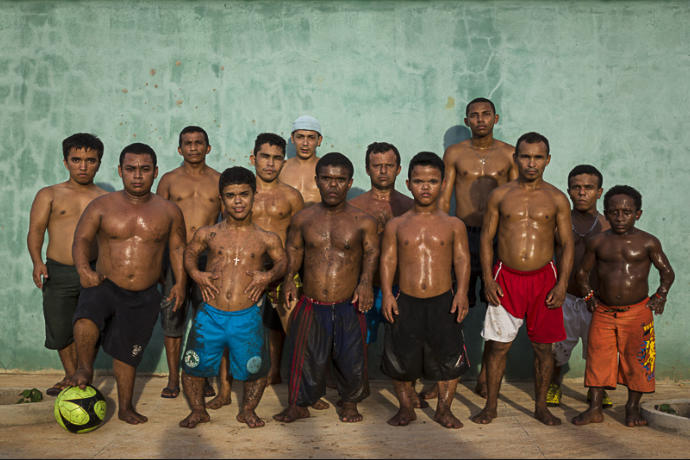
The "Giants of the North" football team. The brain child of its creation was Capacidade a fellow dwarf in 2007. They
travel extensively across Brazil playing amateur games against teenage girl and boy teams and occasionally "veteran"
male teams. Wherever they travel they always attract much attention and are viewed with affection, warmth, curiosity
and respect. Maranhao state.
